 |
 |
 |
| |
Barriers to Hepatitis C Treatment in an HIV-HCV Co- Infected Cohort
|
| |
| |
Reported by Jules Levin
IDSA Oct 2-6 2013, San Francisco, CA
Guajira Thomas1, Claudia Hawkins1, Sudhir Penugonda1, Michael Angarone 1,2, Frank Palella1, Valentina Stosor1,2
Divisions of Infectious Diseases1 and Organ Transplantation,2
Northwestern University Feinberg School of Medicine, Chicago, IL, USA
"In univariate analysis, female gender, African American ethnicity and active substance appear to be predictors of failure to treat. AIDS (CD4 + T cells < 200 cells/ml), NNRTI containing antiretroviral regimens and history of heavy alcohol use were also appear to be significant. Major barriers to therapy were failure to complete hepatology evaluation and deferral of therapy until new agents are available for those patients who area considered appropriate candidates for HCV therapy......
......Conclusions. In this urban ambulatory HIV-HCV co-infection cohort, 46% of HIV-HCV have received HCV therapy. This percentage is higher than recently reported in a large European cohort. In univariate analysis female gender and African American race are significant predictors of failure to treat HCV in this cohort. However, multivariate analysis is need to confirm this association. Other significant predictors identified in univariate analysis include AIDS, active substance use and history of heavy alcohol use. The major barriers to HCV-RX were poor adherence with hepatology evaluation and low uptake of therapy for patients that are eligible for treatment. Infectious Disease centered HCV-TX might provide better opportunities for treatment."
CONCLUSIONS
· In this urban ambulatory HIV-HCV co-infection cohort, 46% of HIV-HCV infected patients have received HCV-directed
therapy. This percentage is higher than recently reported in a large European cohort.
· In univariate analysis gender and race disparities appear to be significant predictors of failure to treat HCV. However, multivariate analysis is needed to confirm this association.
· Major barriers to HCV-RX were failure to complete hepatology evaluation and low uptake of therapy for patients
that are eligible for treatment.
· Infectious Disease-centered HCV-TX might provide better opportunities for treatment due to provider-patient
relationships and by removing potential barriers such as inconvenience of additional medical evaluations.
ABSTRACT
Background. Hepatitis C virus (HCV)-related liver disease has emerged as a leading cause of morbidity and mortality in HIV
patients. HCV therapy (HCV-RX) may reduce progression of liver fibrosis and liver related death in these patients.
Methods. Northwestern University Viral Hepatitis Registry (NUVHR) and HIV Outpatient Study (N-HOPS) are prospective observational cohorts of ambulatory HIV pts recruited from our outpatient HIV Center. We queried both databases for pts with chronic HCV infection (≥ 1 detectable HCV RNA) in order to define the epidemiology of HCV infection in our center and determine barriers to HCV-RX.
Results. We identified 130 patients with HCV seropositivity: 21 (16.2%) had spontaneous clearance of infection and 109 (83.8%) developed chronic HCV infection. Of these, 50 patients (46%) have received HCV treatment. Four patients were treated with Interferon (IFN) monotherapy, 40 with Pegilated- IFN plus ribavirin and 6 with triple therapy with Boceprevir as part of a clinical trial. The overall sustained virology response (SVR) is 42%. In univariate analysis, female gender, African American ethnicity and active substance appear to be predictors of failure to treat. AIDS (CD4 + T cells < 200 cells/ml), NNRTI containing antiretroviral regimens and history of heavy alcohol use were also appear to be significant. Major barriers to therapy were failure to complete hepatology evaluation and deferral of therapy until new agents are available for those patients who area considered appropriate candidates for HCV therapy.
Conclusions. In this urban ambulatory HIV-HCV co-infection cohort, 46% of HIV-HCV have received HCV therapy. This percentage is higher than recently reported in a large European cohort. In univariate analysis female gender and African American race are significant predictors of failure to treat HCV in this cohort. However, multivariate analysis is need to confirm this association. Other significant predictors identified in univariate analysis include AIDS, active substance use and history of heavy alcohol use. The major barriers to HCV-RX were poor adherence with hepatology evaluation and low uptake of therapy for patients that are eligible for treatment. Infectious Disease centered HCV-TX might provide better opportunities for treatment.
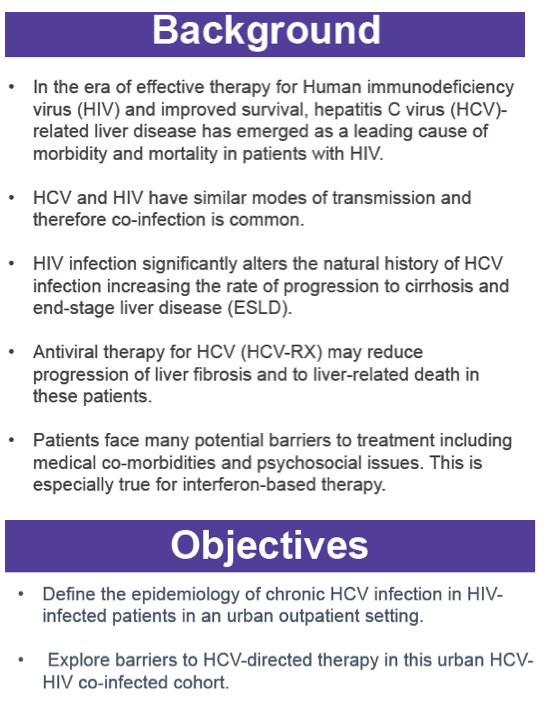
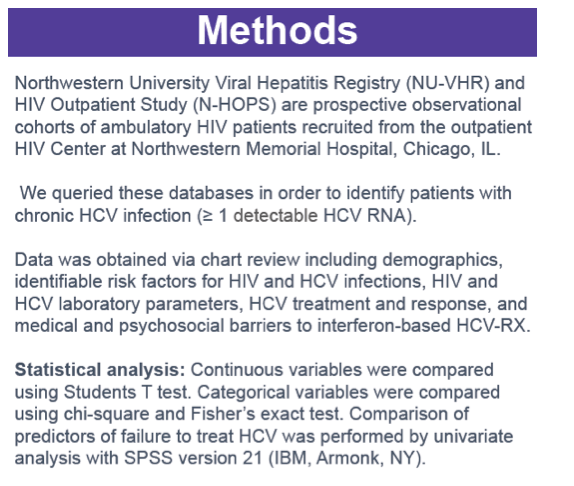
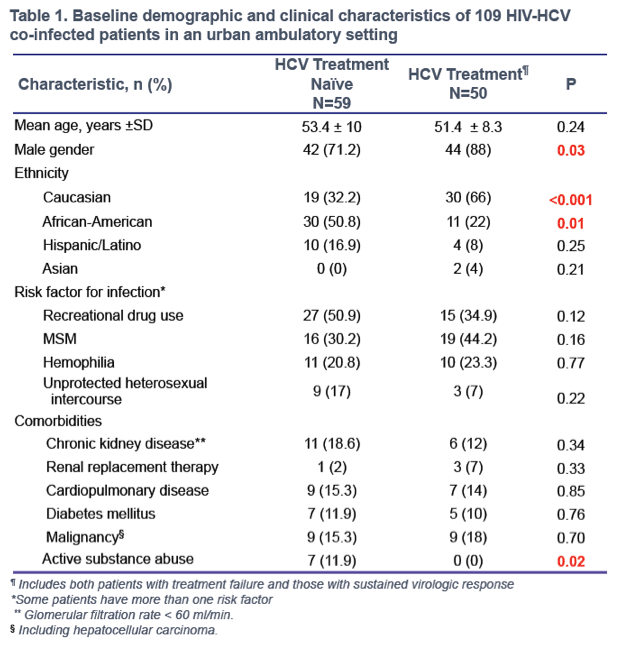
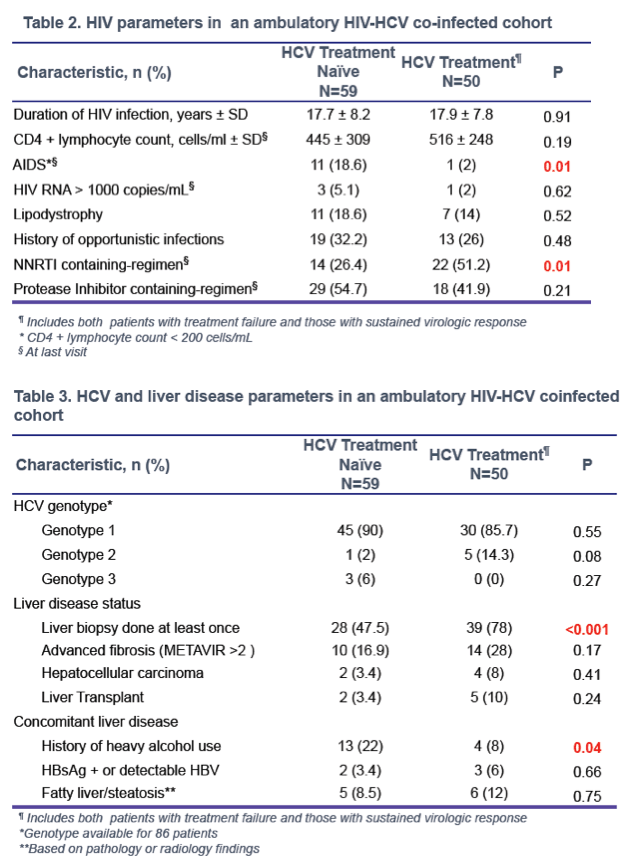
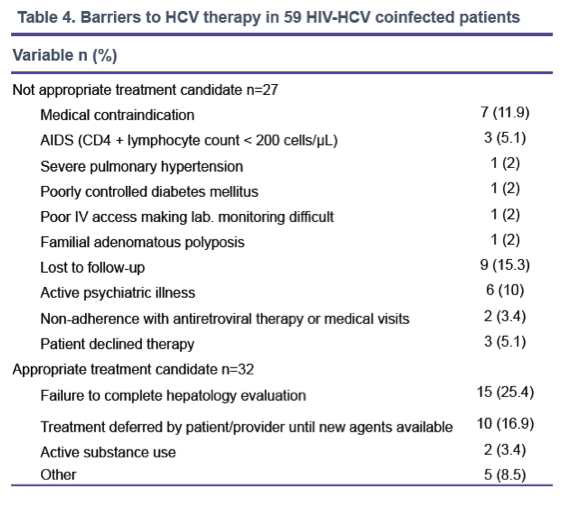
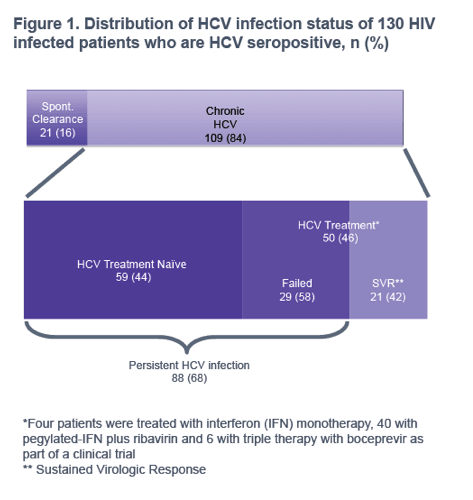
|
| |
|
 |
 |
|
|